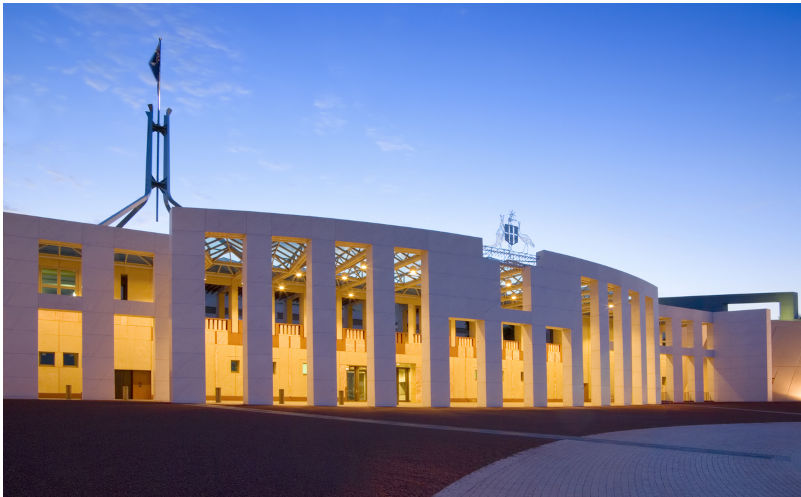The effect the Greens will have as a ginger party
April 15, 2025
The Greens no longer aspire to be a party of government. They have become what is best described as a “ginger party”, a political party that tries to influence the direction and policies of the Labor Party.
“Ginger groups” have been around for many years. They are formal or informal groups that exist and are organised within a political party, that try to influence its direction, its leadership or activities – generally to make it more radical.
The Greens now try to do this from outside the Labor Party, using their critical position in the Senate — and, they hope after this election, the House of Representatives — to force the Labor Government to adopt their policy proposals and amendments to pass legislation.
Their biggest success so far was in 2010, when they persuaded/forced the then Labor Government to expand Medicare and include free dental service for children. They also claim it was their pressure that forced the Albanese Government to increase its funding for housing.
It is common for independents and minor parties, whose votes are needed to pass legislation, to demand and bargain for amendments to advance their own policies and ideologies. Almost 50 years ago, the first leader of the Australian Democrats, Do Chipp, a former Liberal minister, promised that the new party’s aim was to “keep the bastards honest”. The bastards on both sides of politics.
But the aim of the Greens is different and quite unique. As explained during the ongoing campaign by its leader, Adam Bandt, in his address to the National Press Club, the Greens want “to keep [Peter] Dutton out and get Labor to act”. He complained that Labor in government had been tinkering around the edges and lacked the guts to act.
This theme, incidentally, makes nonsense of claims by Dutton and the Coalition that if there is a hung parliament, the Labor Party would have to do a deal with the Greens. No deal is necessary. The Greens have declared they would not support a Dutton-led Coalition Government under any circumstances. They are effectively bound to support Labor without conditions on the crucial issues of supply and any motions of confidence.
But they will deal with Labor legislation bill by bill, trying to push it to be more radical.
Not “keeping the bastards honest”. But applying the whip.
The Greens have tried getting into bed with Labor Governments and have been disappointed. In Tasmania, in 1989-90, they had an “accord” to support Labor in government which ended acrimoniously. In the ACT, they had a formal coalition with Labor from 2012 until last year’s elections. That was discontinued after the elections when the Greens dropped votes (and two of their five seats). Many in the party thought they had been tainted (in the eyes of the electorate) by sharing power, losing support because of their active participation in a government that did not deliver the Greens’ agenda.
In that ACT election, Labor and the Liberals also lost votes (though not seats), the winners being independents who gained two seats, the first time in more than 20 years that voters elected candidates who did not belong to Labor, the Liberals or the Greens.
The Greens believe they can achieve more by being on the cross-benches than in being a minor party within government.
And why on earth would Labor want to form a coalition with the Greens when they can be 100% sure the Greens would never vote in such a way as to kick them out and allow Dutton to form government?
Aside from statements from the Greens about supporting Labor and rejecting the Coalition, there is the not unimportant matter of what voters who support the Greens would want. This is demonstrated in the preferences of Greens voters.
At the last election, approximately 80% of those Greens preferences that were distributed ended up supporting Labor, not the Coalition. This is a very high proportion, though it doesn’t match the 90% of the preferences of voters for the Democratic Labour Party in the 1950s and 1960s that favoured the Coalition over Labor.
It is also relevant that, federally, the support shown for the Greens by voters and in public opinion polls has been very steady — hovering around the 12% mark — during the time the Greens’ leadership clearly stated its preference strategy.
Labor can count on support from the Greens even while its leaders denigrate and attack the Greens. Labor and the Greens battle to win the votes of the same slice of the electorate. In the coming election, for example, Labor will be trying to win back two seats in Brisbane from the Greens that Labor held previously.
The outcome is likely to be decided by the way the Liberals direct their preferences.
The Liberals have no illusions about where the Greens stand – namely, well to the left of Labor on the political spectrum. Indeed, they raise the spectre of a Labor/Greens coalition in the hope that this will persuade voters to back the Coalition.
Actually a Labor/Greens coalition may be less progressive than a Labor Government that has to deal with the Ginger Party that the Greens have become.

